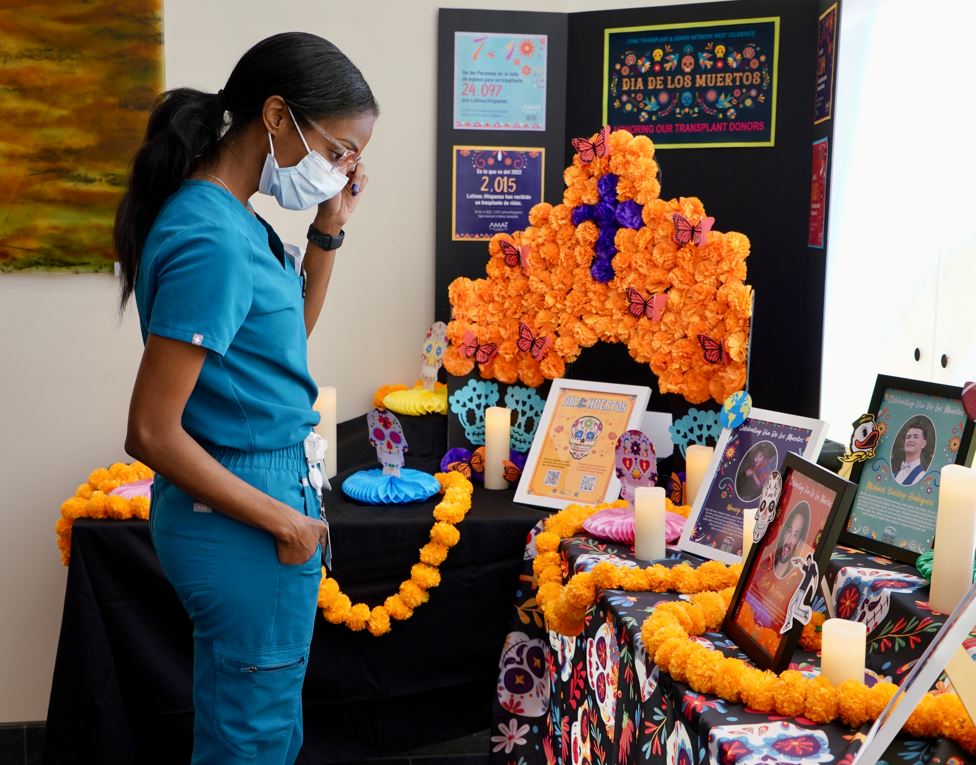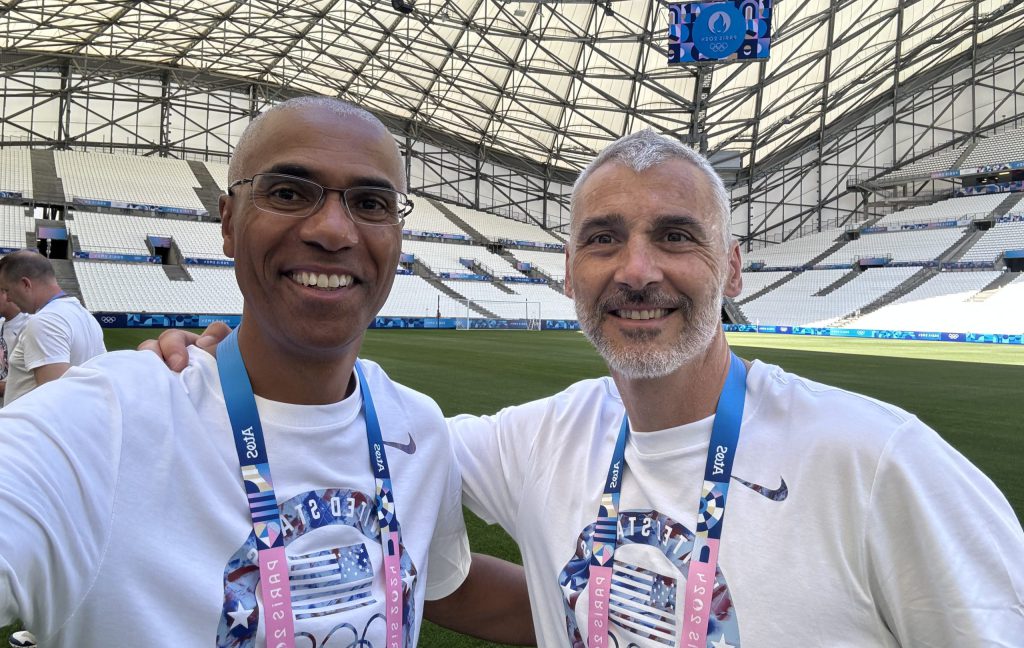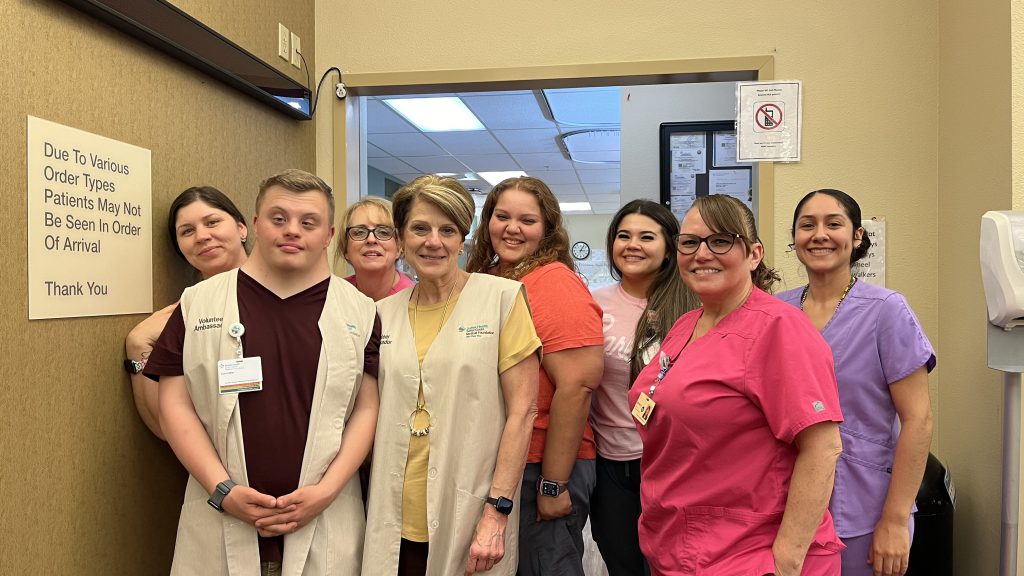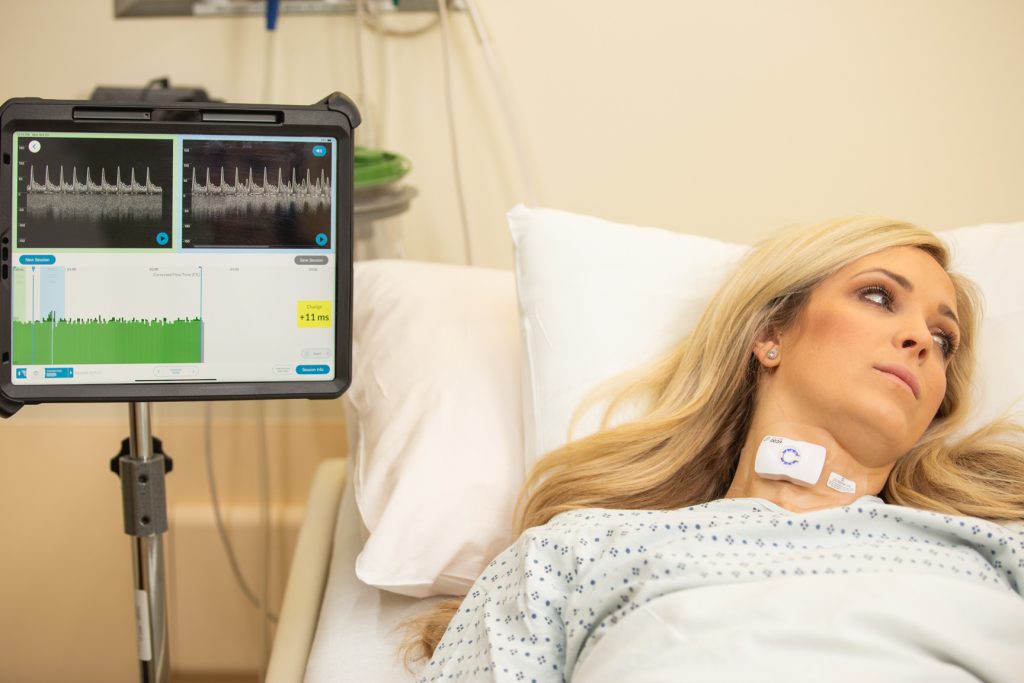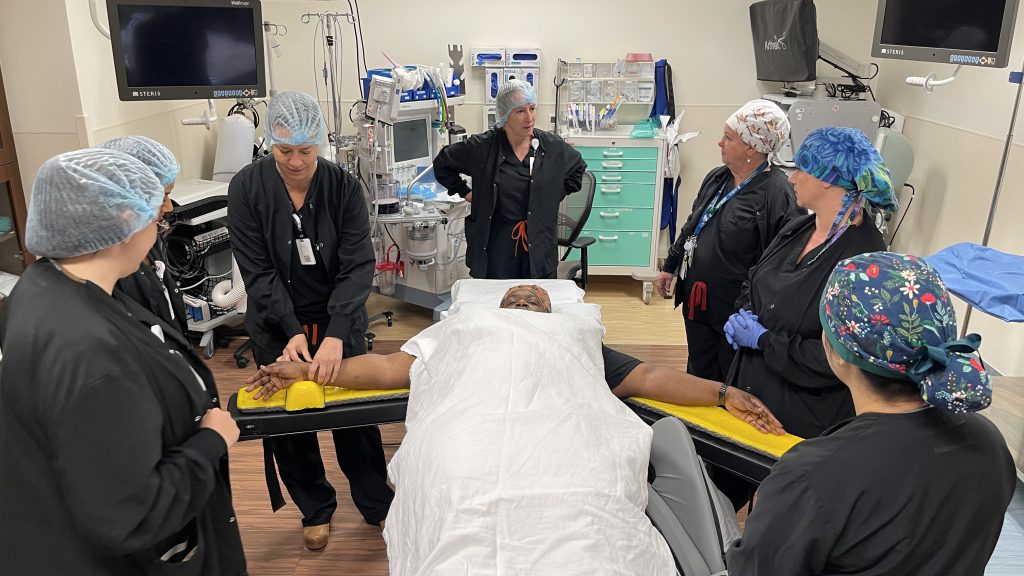Have you spotted the elaborate displays that have popped up in celebration of Día de los Muertos? Known as the Day of the Dead, these vibrant altars, called “ofrendas,” celebrate reuniting the living with the dead. One transplant center in San Francisco sees a deeper meaning behind this Mexican holiday, as well as an opportunity to educate the public about organ donation.
Sutter’s California Pacific Medical Center is for the first time tapping into Day of the Dead to honor organ donors who have passed away and to raise awareness about the benefits of organ donation. They are especially keen to target those in the Hispanic population as studies have shown that Hispanic individuals are disproportionately in need of donor organs.
“CPMC’s altar is dedicated to the community to promote education about the importance of organ and tissue donation and what being a registered donor signifies,” says Dr. Robert Osorio, who specializes in liver transplants and is chair of CPMC’s transplant department.
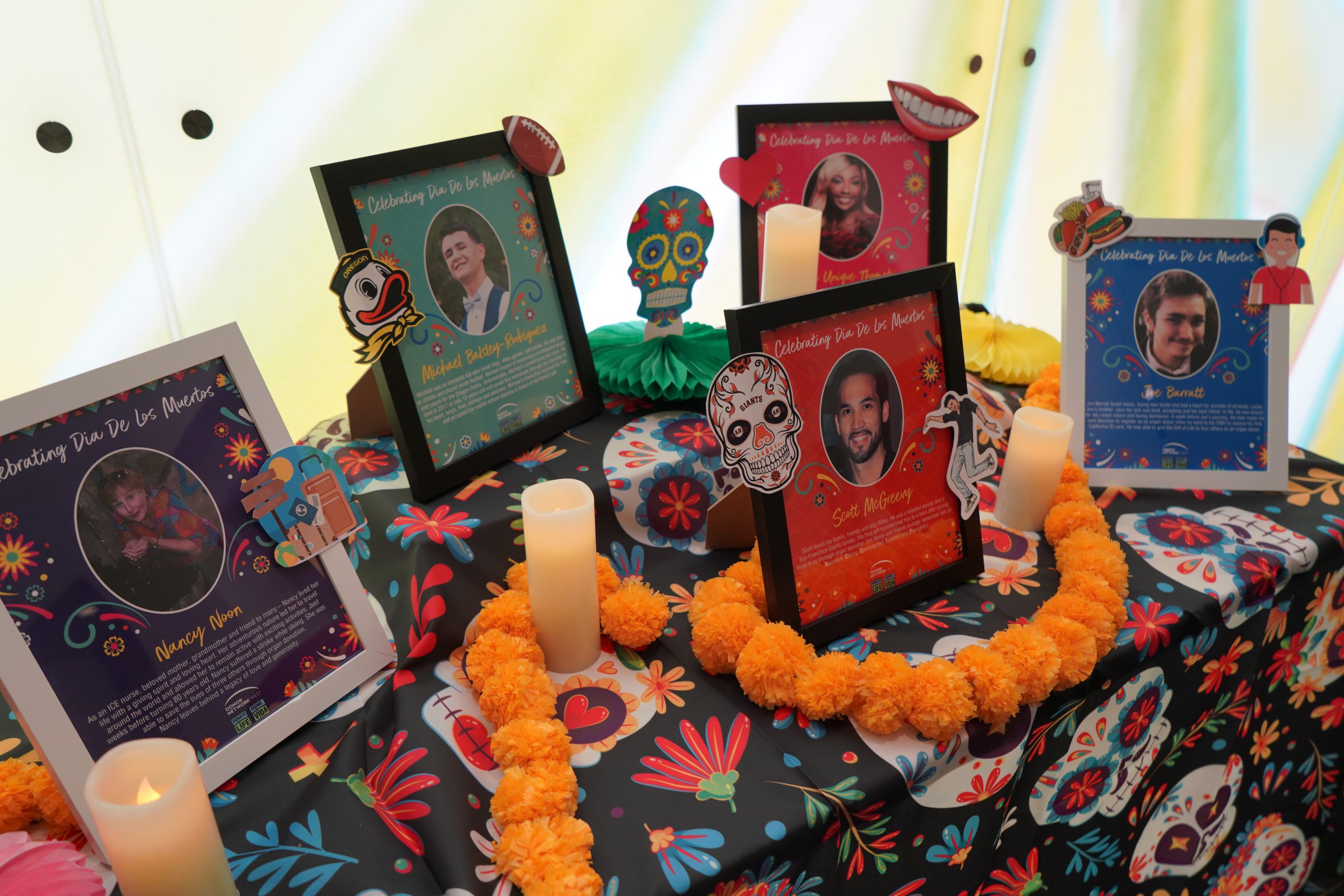
Organ donor stories were highlighted to honor their remarkable gift of life to someone in need.
Hispanics in greater need of organ transplants
According to the U.S. Department of Health and Human Services (HSS), Hispanics have high rates of diabetes and heart disease. Mexican Americans, in particular, suffer disproportionately from obesity, which contributes to diabetes, hypertension and heart disease, all conditions that put this group at greater risk for organ failure. But data tells a different story about organ donation and this community – one of hesitancy.
HSS found that 20.5% of the total candidates waiting for transplants are Hispanic yet comprised only 14% of organ donors. Researchers have hypothesized that this reluctance to consent stems from medical mistrust, language barriers and poor access to adequate health information. Another significant obstacle includes overcoming long-held religious or cultural beliefs surrounding life and death and organ donation. In this regard, it has been theorized that women in Hispanic communities may be the missing link, as they can serve as an excellent bridge between the healthcare provider and families.
“A single organ donor can save the lives of eight people through organ donation and heal up to 75 lives through tissue donation,” says Dr. Osorio. “More awareness is needed, including meeting people where they’re at.”
Dr. Osorio shares that CPMC’s advanced organ therapies team and transplant coordinators – many of whom are fluent in Spanish – are once again ramping up in-person clinics on the heels of the COVID-19 pandemic.
Every organ counts. Here’s how to sign up
Individuals interested in becoming an organ donor can sign up online through California’s state registry here or in person at their local motor vehicle department here. iPhone users, too, can register via the Health app on their phone where their registration will show on their Medical ID.
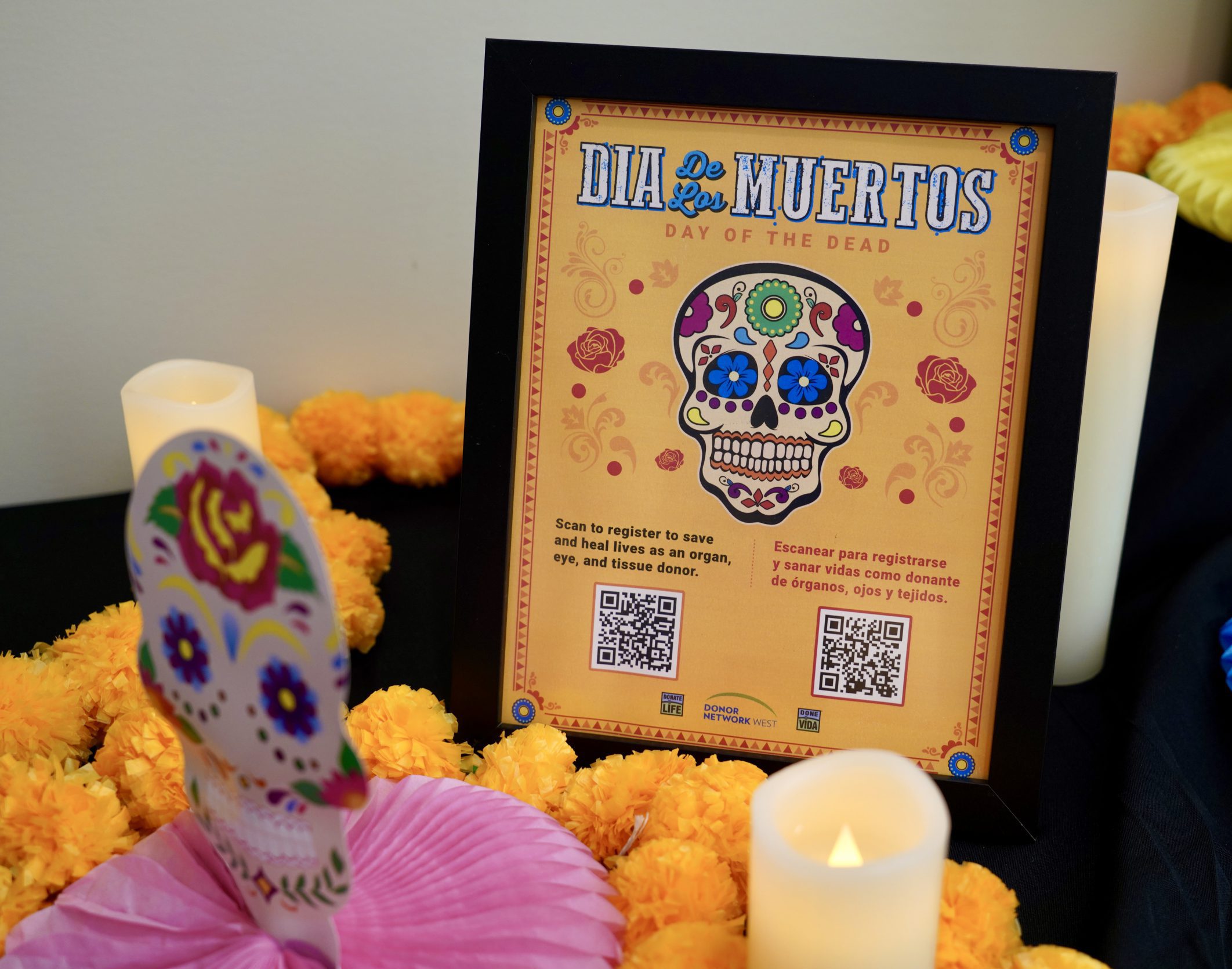
Signage directs people who are interested to register to become an organ donor.
Dedication to the deceased
Día de los Muertos is celebrated each year on Nov. 1 and 2. The holiday is widely observed in Mexico and other countries in Central America. It’s a tradition for families to build altars using bright yellow marigold flowers, photos of the departed, and their loved ones’ favorite foods and drinks. It is believed that these offerings encourage visits from the land of the dead where the departed souls are invited to join in the celebrations.
Altars at CPMC’s Van Ness campus and the adjacent Sutter medical office building have been on display since Friday, Oct. 28, and will run until the end of the week.

